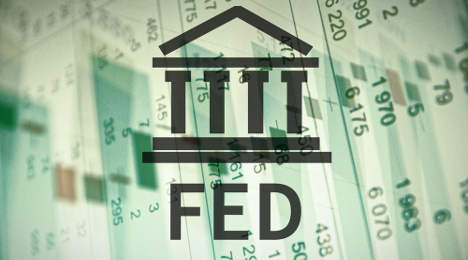TransUnion finds 9.3M consumers couldn’t handle rate rise

While the Federal Reserve chose again to pass on moving interest rates higher, research from TransUnion found that up to 92 million credit-active consumers would experience some type of monthly debt service payment increase if policymakers had raised interest rates by 25 basis points.
However, TransUnion determined the average monthly payment increase for these consumers would be a mere $6.45. Further reassuring for finance companies, analysts insisted only about 10 percent of these impacted consumers — or 9.3 million — will likely not have the capacity to absorb an increased monthly payment obligation arising from a Fed rate hike.
To recap, this month’s gathering of the Federal Open Market Committee (FOMC) produced a result the industry has seen for much of the past couple of years — members leaving the federal funds rate unchanged.
“The committee judges that the case for an increase in the federal funds rate has strengthened but decided, for the time being, to wait for further evidence of continued progress toward its objectives,” the Fed said last week.
“The stance of monetary policy remains accommodative, thereby supporting further improvement in labor market conditions and a return to 2 percent inflation,” policymakers added.
The Fed explained that information received since the FOMC met in July showed that the labor market has continued to strengthen and growth of economic activity has picked up from the “modest” pace seen in the first half of this year.
“Although the unemployment rate is little changed in recent months, job gains have been solid, on average,” the Fed said.
Policymakers also pointed out household spending has been growing strongly but business fixed investment has remained soft. Inflation has continued to run below the committee’s 2 percent longer-run objective, partly reflecting earlier declines in energy prices and in prices of non-energy imports.
The Fed went on to say market-based measures of inflation compensation remain low; most survey-based measures of longer-term inflation expectations are little changed, on balance, in recent months.
Before the Fed made its decision, TransUnion found that up to 68 percent of credit-active consumers would experience some level of payment shock — a change in monthly payment obligations — from an interest rate increase. Analysts insisted that unlike vehicle installment contracts that have a fixed APR for the term, consumers who are susceptible to a payment shock have one or more variable-rate credit products in their wallets, such as a credit card, home equity line of credit, or certain forms of mortgages and personal loans.
TransUnion also analyzed historical payment behavior across each consumer’s credit wallet to assess whether that consumer could afford an increased monthly payment of any size.
“Ahead of a potential rate hike from the Federal Reserve, there is much speculation about the impact to consumers — and their lenders — from increased monthly payments,” said Nidhi Verma, senior director of research and consulting in TransUnion’s financial services business unit.
“In theory, 137 million consumers could be exposed to a payment shock, but in fact not all of these consumers will be impacted,” Verma continued. “For instance, some consumers are transactors, i.e., they pay their balances in full each month. Some have an APR that cannot be further increased.
“Our data show there will indeed be an impact from potential interest rate rises, but it’s far less widespread than many anticipate,” she went on to say. “Most importantly, it can be identified at a consumer level based on our research.”
According to TransUnion’s study, while consumers across all risk tiers would experience an impact from the potential Fed interest rate hike, the impact varies. Consumers in the near-prime risk tier (those with a VantageScore 3.0 credit score between 601 and 660) had the largest share, with 82 percent of near-prime consumers impacted from a potential rate increase.
TransUnion used its CreditVision aggregate excess payment (AEP) algorithm, which incorporates monthly payments from mortgages, credit cards and other debt obligations, to determine a consumer’s capacity to afford an increased monthly payment. With a 25-basis point rise in interest rates, 90 percent of exposed consumers can absorb their respective payment shocks. However, 9.3 million consumers do not appear to have the capacity to absorb a 25 basis point rise in interest rates.
“While it’s important to address the 9.3 million consumers who cannot absorb the payment shock, 90 perent percent of exposed consumers can afford their increased monthly payments,” Verma said. “However, if interest rates continue to rise progressively, more consumers might not be able to absorb the payment shock.
Lenders should be mindful of which consumers in their portfolio are at risk from payment shocks, and use solutions such as AEP to identify these consumers and engage them appropriately,” she added.
TransUnion’s study found that if interest rates were to rise by 100 basis points, an additional 2.5 million consumers might have a negative capacity to absorb their respective payment shocks. In total, 11.8 million consumers are estimated to be at risk of a negative capacity to absorb their increased payment obligations from a sudden 100 basis point rate increase.
“Fortunately, we believe it is highly unlikely the Fed will raise rates more than 25 basis points at any one time over the near term,” Verma said. “This pace gives potentially impacted consumers an opportunity to adjust. In many cases, making minor changes to household spending would allow consumers to accommodate the payment shock.”
Verma discussed TransUnion’s finding more in the video available at the top of this page and also posted here.
For more information on how the impact of a Fed interest rate hike might impact consumers, and how to use TransUnion’s CreditVision aggregate excess payment algorithm to estimate the risk in your portfolio, visit www.transunioninsights.com/interestrates.

 View The Latest Edition
View The Latest Edition

